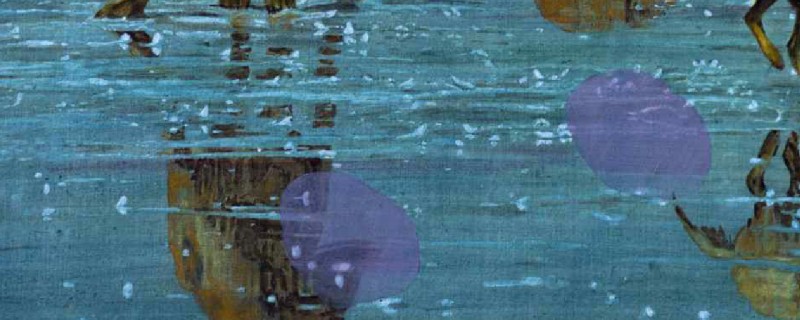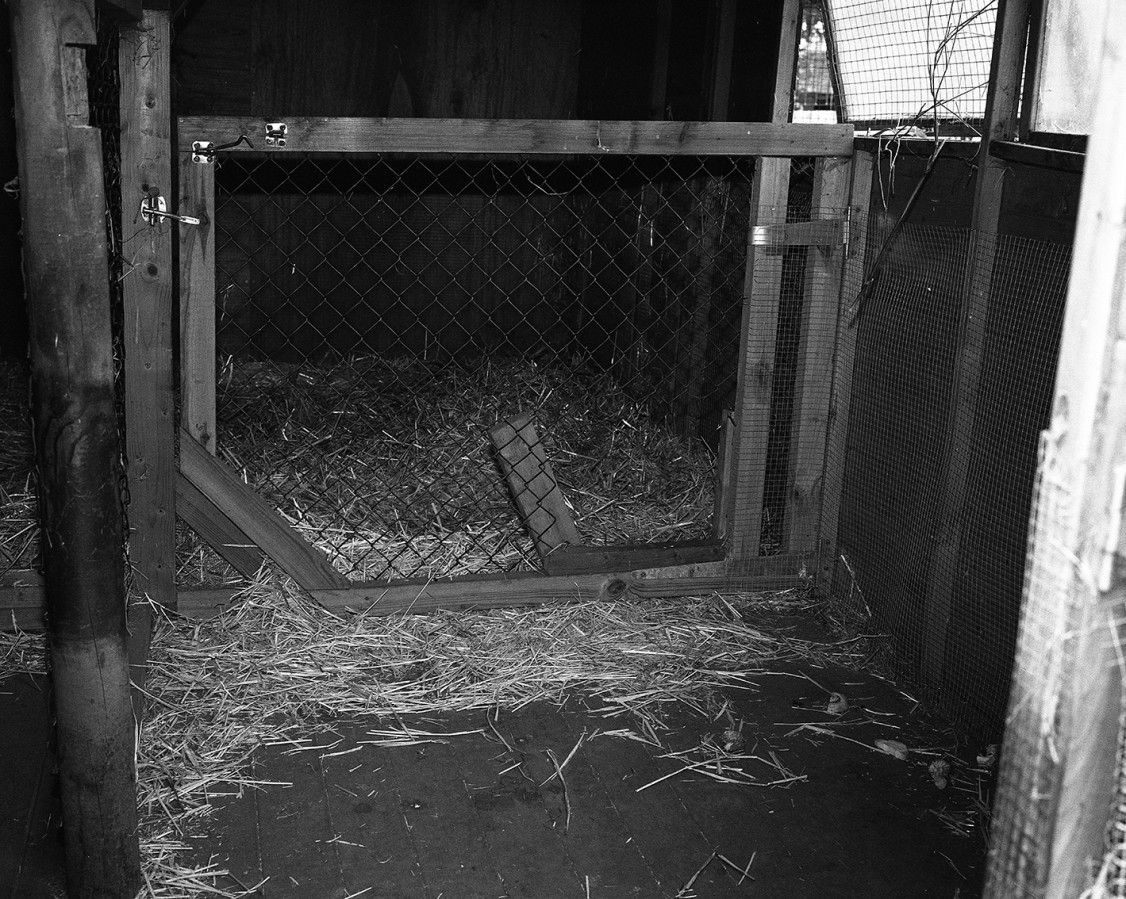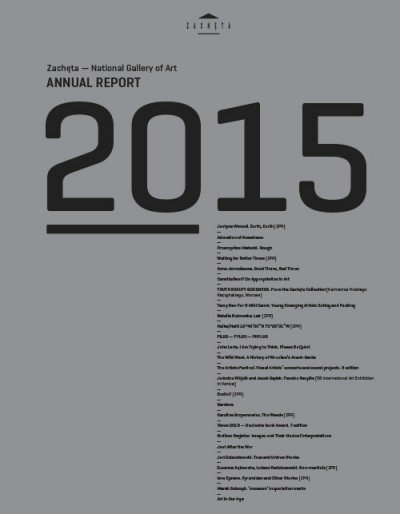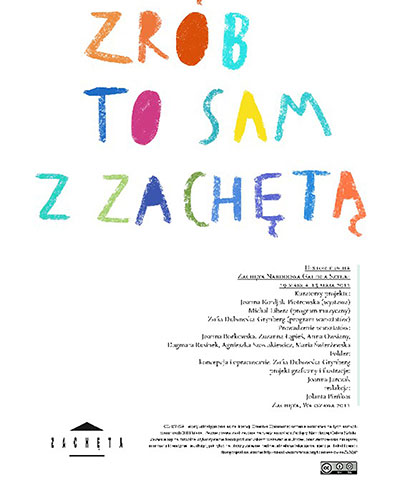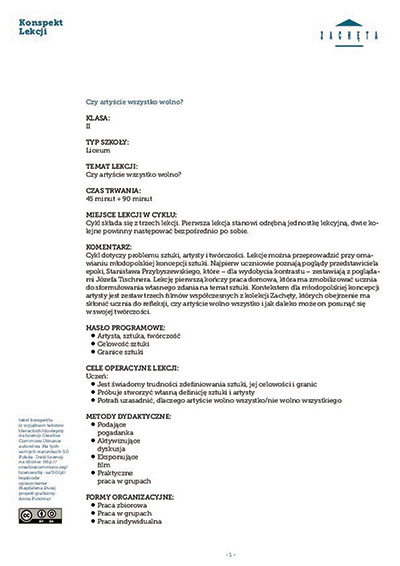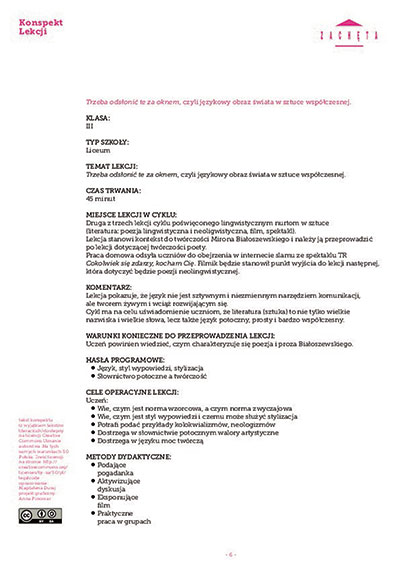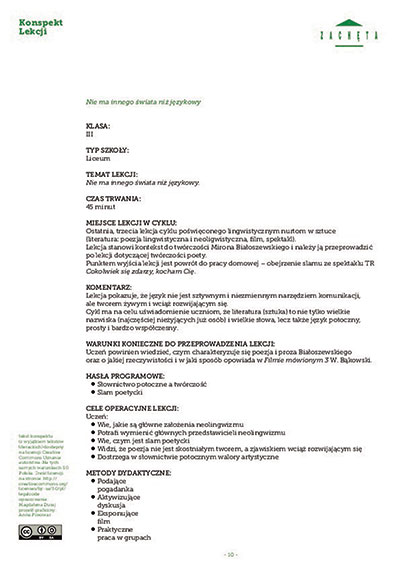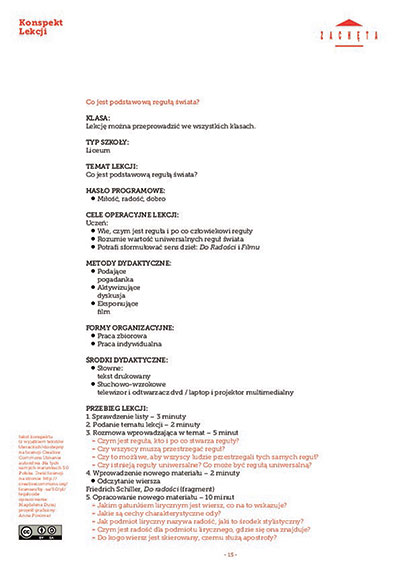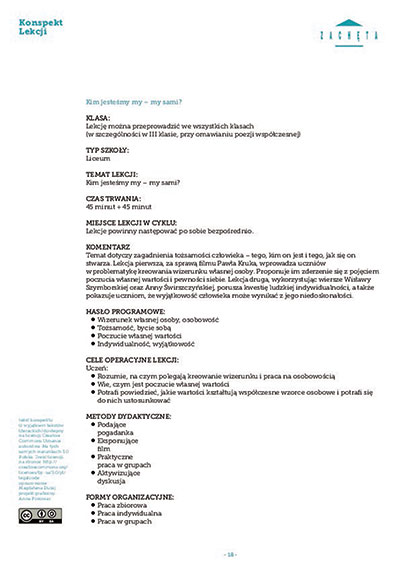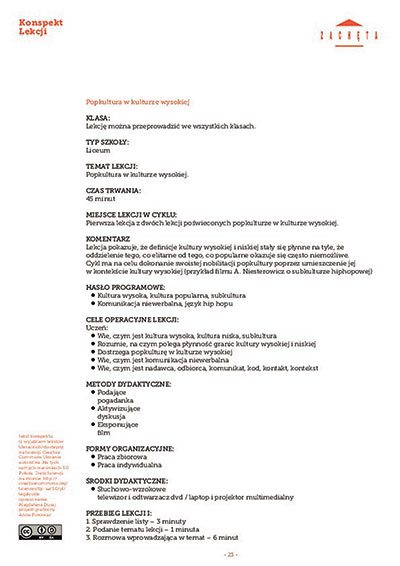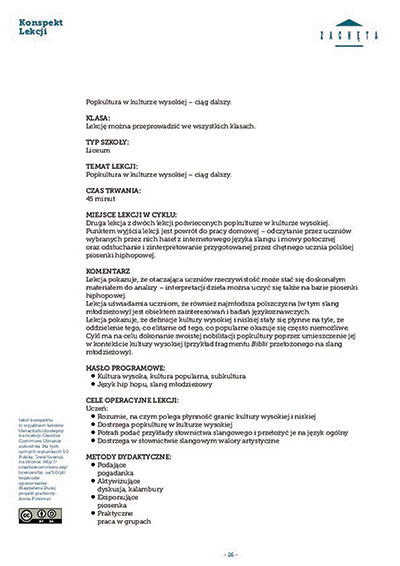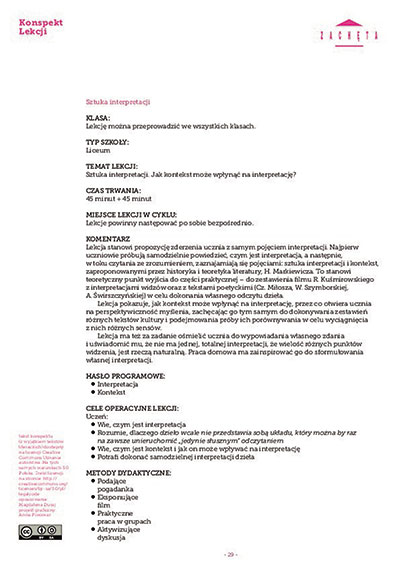Publikacja udostępniana jest na licencji Creative Commons.
author: Mira Marcinów
Publication date: 13.05.2020
The cage stayed shut so long
that a bird was hatched insidethe bird stayed still so long
that the cage
corroded by its silence
opened upthe silence lasted so long
that behind the black bars
laughter rang
Tadeusz Różewicz, ‘Śmiech’, trans. Stanisław Barańczak, Clare Cavanagh, in Polish Poetry of the Last Two Decades of Communist Rule: Spoiling Cannibals’ Fun, Chicago: Northwestern University Press, 1991
1. Every day for the last two months, I’ve been approaching these photographs and then backing away quickly. I need some air. It’s hard to breathe near them. Like in an old house of even older people with no one to clean anymore. These prints smell of sickness, medicines, steel, zoos, hay full of manure on a hot, stuffy day.
To say that these pictures smell like that is to say nothing. There’s a foulness. An unhealthy air rises from these photographs. Not the city air, poisoned with smog and hatred, but a miasma that reminds us that we’ve been locked up. And before us, so many people and animals from outside the human species have been locked up. Since the middle of March 2020, since the outbreak of the pandemic, I have been in isolation. Like many others. And that’s more or less everything I know about being locked up, about cages and lack of air.
2. Enclosures.A large empty cage. Locked. There’s a bit of hay peeking out from under the door, like a trace of a stranger’s presence. It’s most interesting in the broken spot. It looks like a photo of a photo on the screen on the right edge. Bars, stretched out diamonds. The pixels fit together like that. There was someone there. An x-ray of the picture frame starts to dissolve the wooden columns. They’re closer, but it’s hard to focus on them. Something is peeking out from the post on the left. A gap in the wood. The sun doesn’t shine; it doesn’t even come through the barred, ajar window. But it’s not a window, more like some kind of vent. Something smaller. Slightly open, there’s no draft. Is it a way to avoid stuffiness? Is there enough air to breathe in there? But that’s happening off to the side; the cage is in the centre. It may seem that it’s a photo of a cage to be repaired, for lease or for sale. The renter has gone for a walk or died. You have to take a photo quickly. A record of places where people live and die. It has to be documented. But you can see that it’s not a document, not in the way Jacques Rancière defined the concept: a report of what happened. It’s more like its opposite — a monument, or what preserves memory through its existence alone. It is a carrier of the memory of someone’s presence. ‘Here is the place where someone was imprisoned’. All places of imprisonment look like cages. All cages have wires. You can see it’s been poorly set up. This is not a cage with a view.
And one more thing: where does the scene in this photo play out? On what animal is it focused? And for whom is the photographer here? Surely not for someone who was locked up here? The artist’s distance from the bars is safe. The photographer does not approach it. Would she have kept this distance to the cage if an animal lived there? I don’t think so. If there was someone there, she would probably move closer. But here, the dangerous object is the cage, not the animal.
3. This is not an easy time to look at these pictures with their miasmas and the pandemic spirit of house arrest. I cannot move away from these images, get out, breathe freely and go back to the photography having gotten some air. Because when I look at Joanna Piotrowska’s photographs, you can only go outside, to get some air, in masks and only for essential purposes. And you can’t breathe freely anyway.
When I finally move away from Piotrowska’s photography, I have them. I remember. They return in different settings and provoke reflection. I think more about those who live in cages, zoos, prisons, detention centres, slaughterhouses. I think about how important it is to breathe deeply. I remind myself to breathe. Breathe in. Breathe out. Piotrowska’s photographs become my memento for this time: ‘Breathe!’
4. Enclosures. And so I look at this picture of the cage and feel I can’t write about it any other way than spasmodically fighting for some air. In one breath. It’s difficult to remain indifferent to the thickened, tense matter of suffocation. A cut of supply of air that rises somewhere else, fog from above the ocean hides the other pictures. And here, I remember all the zoos, cowsheds, circus tents stables and slaughterhouses from the early nineties. I was six, maybe eight, no more than ten years old. There were different places, different summer holidays. But the same muggy air. The same stinging smell of faeces, hair and sticky animal bodies. A warm scent crushed in the stalks of hay. Air held in a child’s cheeks. And then you could run out, let out the frowst of those difficult rooms. I remember those few breaths. But the trick doesn’t work anymore. Not here.
It’s not comfortable looking at this place, although we know it so well. The photograph shows a room that we leave quickly, as soon as we get the chance. As for the picture, you can’t do that. But you can ask: whose cage is it? Who did it belong to? Except that the cellar-coloured painting won’t answer. A photograph that seems like it should be wet to the touch as well. And if you were to smell it, it’d feel musty. I know its smell better than what it represents.
5. Thanks to these photos, we will not escape to warm countries, we will not break away from a difficult reality. This is not escapist art, rather its opposite — confrontational photography. Because it doesn’t just look gloomy and put you in a melancholy mood. It also makes you ask some tough questions. Questions that go beyond the human species. Can an animal be ‘kept’ in such places? Can it end well for anybody? And what are the consequences of living in confinement?
Specialists speak of zoochosis — psychosis caused by isolation, captivity, subjecting caged animals, as if in a kind of zoopticon, to permanent surveillance. Some veterinarians and behaviouralists say that there are no animal mental disorders other than human-induced madness. We have no evidence that an animal living in the wild, outside the anthroposphere, could go mad. This is because animal psychiatry can be talked about in relation to animals to which we assigned some functions. The functions that other species are forced to perform for us. Thus, pet, fur, laboratory or circus animals are treated by zoopsychologists, which leads to the conclusion that only imprisoned animals suffer mentally. Thus, animal psychiatry is the result of human appropriation. Perhaps it’s a kind of anthropomorphisation? And if it is an anthropomorphism, is it the empathic one, which aims to help other animals outside the human species, or is it the oppressive one, the one that is possessive? Or maybe it’s just another case of the psychiatrisation of the world, from which not even the ‘dog who rode trains’ would escape — that mad traveller, the pathological vagrant suffering from dromomania, a dissociative fugue?
6. Zoochosis is not only driven by life in confinement, but also by the increasingly richer animal psychopharmacological industry, which is estimated to be worth nine billion dollars in the United States. In Poland, the animal psychotropic market is unregistered, but we have human psychotropics, which we share with non-human animals. You can make money off this, too.
The suffering of animals caused by isolation manifests in various ways. Sometimes as persistent, repetitive behaviour that zoopsychologists compare to obsessive-compulsive disorder in people. Compulsive behaviours are characteristic of many animals indoors. They bring some relief, although they are not adaptive. An animal chasing its own tail or shadow all day, licking its paws instead of sleeping, eating or walking, is a warning sign for the owner that something is wrong, that the balance has been disturbed by confinement, isolation or simply captivity.
The most discussed animal outside of the human species suffering from OCD is Gus, a polar bear kept in the New York Zoo. This famous ‘mad bear’ spent eighteen hours a day swimming, performing figure eights in the pool. Gus did not eat, drink, sleep; he neglected activities important for his survival. It was only a simple intervention of the zoo workers, which consisted in throwing barrels into the pool and thus breaking up the animal’s boredom, that helped the bear to recover. So the cure for the madness of animals kept in captivity is sometimes fun. An entire arsenal of animal stimulation devices has been created for the use of humans keeping other species indoors. This is what Piotrowska’s next photographs are about.
7. The situation with Joanna Piotrowska’s photographs of animal stimulation devices is different than with the photographs of cages. You can still do something with them; after all, they’re depictions of things used for fun. Still, catalogued in a presentation gesture, the objects do not put you in a very ludic mood. Toys like this are described as a safety valve, allowing for a release. Different still: that playing with them is compensatory.
Since the publication of Johann Huizinga’s famous book Homo ludens. A Study of the Play-Element in Culture (1938) people have discussed the value of play. They have discussed the fact that the person who is playing is not actually doing something that serves no purpose at all. On the contrary, homo ludens, ‘man playing’, is the basis of our culture. Huizinga writes that there is a clear connection between play and everyday life, these spheres intermingle. However, he also write about pathological fun. Play as an element of culture. A culture in which animals are locked in cages. And caged animals suffocate and go mad. And then we give them toys in response to this ‘inhuman suffering’.
8. Animal Enrichment. When I look at photographs showing tools to activate animals or just pictures of toys for non-human species, it is hard to imagine having fun. They bring to mind iron instruments of torture, perhaps perverse games, but not those to improve the mood. Not the recipient’s.
A metal device laid on the forearm and hand extends slightly beyond the fingers. The hand holding the animal stimulation tool holds the object in a gesture of presentation, recording. A register of unknown, unnamed, difficult objects. A list of instruments of torture. We can see how serial these gestures are. The person holding the prop seems to make it clear that she has come to terms with the situation and allows more pictures to be taken, even though she does not know what it is all for.There is no caption. There is no other title, except the collective Animal Enrichment. The only thing that’s left is ‘a stimulation device’. I can imagine a similar register of toys for people in isolation. Stores that sell gadgets for adults have recorded sales several times higher since the beginning of the epidemic. Their list shows that they’re not used for fun either. Desire has been replaced by need.
9. Animal Enrichment. A chain hangs from the edge of the photograph. It hands like a curtain, a ponytail or a long fringe. At the end of the chain, there is another animal stimulation device. In the middle, an object shielded by hands. Probably made of wood, or maybe it just looks that way. It looks like it’s valuable.
Underneath the upper edge of the photo, the animal stimulation tool hangs on a chain like a punching bag. In my flat, my stairwell, a boxing bag was hung up at the beginning of a pandemic. I hit it or hug it. In the foreground of this photograph, I also see something that can be chewed, although there is no saliva in the picture, or embraced — that’s what these hands are for. But I don’t know anything more about the human and non-human games that protect against madness.
10. ‘The cage stayed shut so long that a bird was hatched inside.’ Finally, I perversely return to Tadeusz Różewicz’s poem. Because it was his words that came to my mind when I was looking at photographs of places of animal isolation. Even though there are no animals in Piotrowska’s pictures, or at least the close crop did not cover it. But beyond the frame, there’s suffering, the panting of enslaved animals. Różewicz also wrote a poem about a cage in which first there is no bird and then there is no laughter. The poet’s imagination fills the empty cage with an animal, and then with a sound. Similarly, Joanna Piotrowska’s photographic imagination fills cages and toys with images that are not there. Looking at her pictures, which I have tried to comment on, I experience their power to represent ‘nothing’. It’s a transforming power, one that makes you look in silence and focus on what this photograph says and about what it is silent.
Mira Marcinów — philosopher and writer, doctor of humanities in psychology at the Jagiellonian University, assistant professor at the Institute of Philosophy and Sociology of the Polish Academy of Sciences. She deals with the philosophy of psychiatry and the theory of madness, with particular emphasis on Polish heritage. Author of books: Szaleństwo jako wybór (2012), Historia polskiego szaleństwa (2018), Bezmatek (2020).
-
18.09 – 06.12.2020Joanna PiotrowskaFrowst
Joanna Piotrowska’s first comprehensive monographic exhibition in Poland presents a selection of her works from the past few years. In her staged photos and videos, the artist focuses on exploring human relationships and their bodily expression.
Zachęta – National Gallery of ArtZachęta
